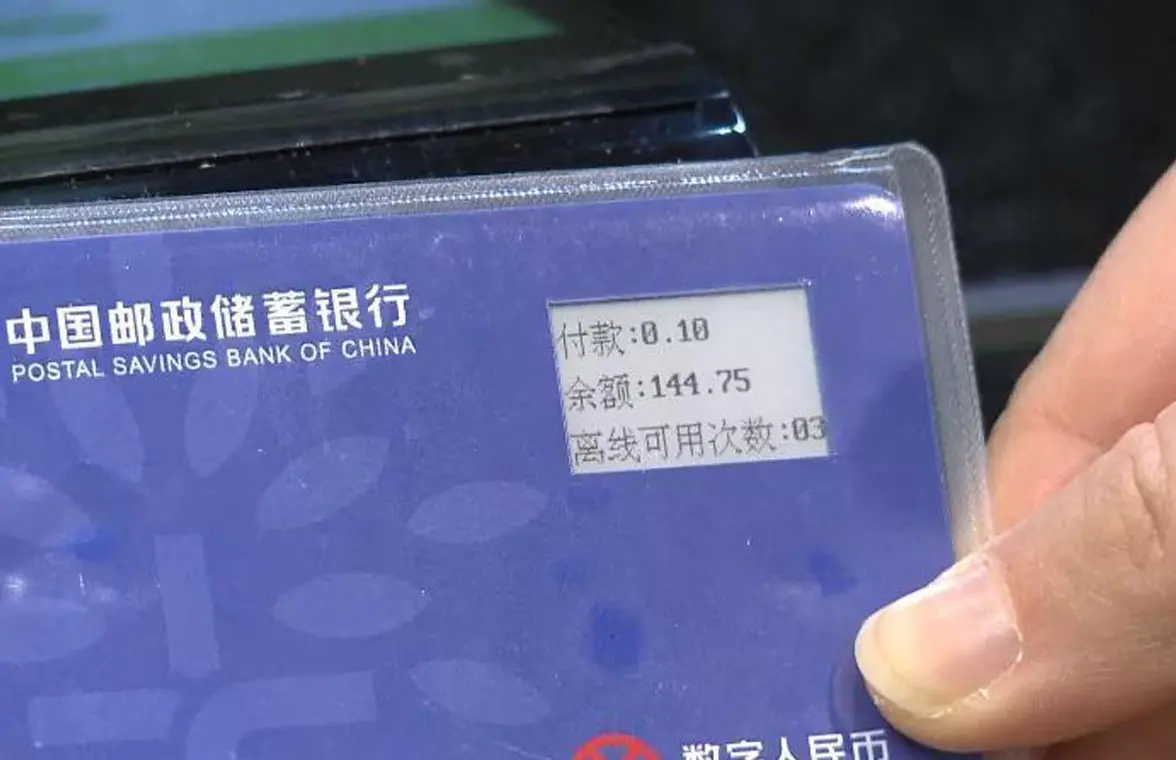
The People’s Bank of China (PBOC) has expanded its central bank digital currency (CBDC) pilot to include a contactless ‘hard wallet’ and NFC wearables that enable consumers to make in-store and transit fare payments with their digital yuan.
The tests come as PBOC also launches its latest ‘red envelope’ lottery in Shenzhen, offering 100,000 residents the chance to win 200 digital yuan (US$31) that they can then use to make in-store payments at more than 10,000 merchants across the city.
Phone-free payments
The digital yuan hard wallet resembles a conventional smart card and allows users to store and make contactless NFC payments with the digital currency without needing to use a digital wallet on a mobile phone.
A small screen embedded in the card enables them to view their card balance and payments record.
The device is being tested at Tongren Hospital in Shanghai and has been designed to make it possible “for people who have difficulty in using smart terminals to use digital renminbi and realise the possibility of crossing the digital divide,” Xinhuanet reports.
“Tongren Hospital will further pilot the use of digital renminbi in payment scenarios such as hospital diagnosis and treatment payments, physical examinations and parking fees,” the publication adds.
“This pilot is the first time to realise a hard wallet payment model that is separated from mobile phones after mobile phone scanning and touch payment in Shenzhen and Suzhou.”
NFC wearables
PBOC has also begun testing digital yuan payments using a variety of contactless wearable devices in Beijing in preparation for a wider pilot in the Chinese capital during the 2022 Winter Olympics.
The devices include “ultra-thin card wallets, visual card wallets and badges, watches, bracelets and other wearable device wallets,” Beijing Daily says.
The test devices were launched on the Beijing Metro, where “invited experiencers such as [figure skating champion] Shen Xue opened a digital RMB wallet after downloading the digital RMB application at the Bank of China Daxing Terminal Branch and recharged, and then successfully purchased a subway ticket on the subway internet ticket recharge machine,” the publication adds.
“Shen Xue used a wearable device ski glove wallet to swipe the subway gates through the NFC function, which is convenient and quick.”
Beijing Daily states that foreign visitors to the Winter Olympics will be able to use digital yuan during the event and that Beijing is working with PBOC to “accelerate the expansion of more digital RMB application scenarios around the 2022 Winter Olympics, and build a legal digital currency pilot zone and a financial technology application scenario pilot zone”.
Shenzhen giveaway
The red-envelope lottery in Shenzhen is the third such giveaway PBOC has held in China and has seen nearly 1.9m city residents apply to receive a digital wallet containing 200 digital yuan on their mobile phone.
The “digital RMB red packets can be consumed at no threshold at more than 10,000 designated merchants that have completed the digital RMB system transformation in Shenzhen,” the municipality states.
PBOC held its second red-envelope giveaway in December 2020 in the city of Suzhou. Participants were able to use digital yuan to make in-store QR code and touch-and-pay purchases with their mobile phone, and to make online purchases from the JD.com virtual mall.
A limited number of participants were also chosen to test “an offline wallet experience” and make “dual offline payments” when their mobile device was not connected to the internet. A video produced by Jiangsu TV suggests that the pilot also included an NFC P2P payments option.
Shenzhen residents spent nearly 9m digital yuan during the city’s first CBDC pilot in October 2020.
Next: Visit the NFCW Expo to find new suppliers and solutions